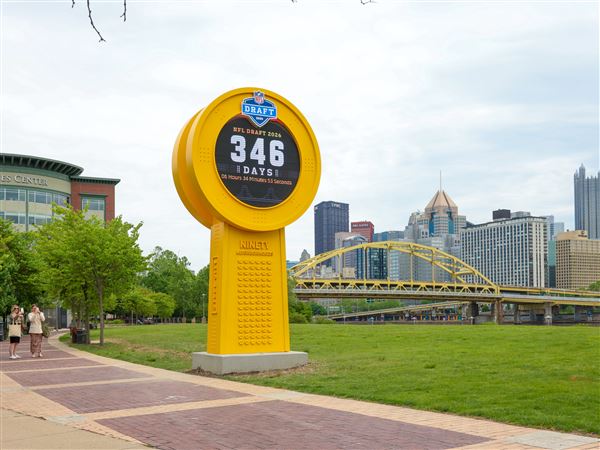A state-sponsored study has targeted nine sources of acid mine drainage in Chartiers Creek -- including the four worst -- along a nine-mile stretch from Upper St. Clair to Carnegie.
They are Wingfield Pines in Upper St. Clair, Millers Run, Presto/Sygan and Coal Run in South Fayette, McLaughlin Run in Bridgeville, Woodville, Scrubgrass and Hope Hollow, all in Scott, and Whiskey Run in Carnegie.
The four-year study is nearing completion, and the results will be forwarded to the state Department of Environmental Protection.
"The recommendations and data will be given to DEP in January in time for the next round of Growing Greener grants in March 2006," said Bob Hedin, president of Hedin Environmental in Mt Lebanon, which specializes in remediating acid mine drainage problems.
A plan for cleaning up the worst discharges was discussed at a public meeting Tuesday at the Carnegie Municipal Building.
Mr. Hedin and Thomas Gray, an engineering manager with GAI Consultants, measured flow rates at the sites, analyzed the water's acidity and checked for the presence of metals such as iron, aluminum and manganese.
"We prioritized the sites and looked at fixing the discharges where we could get the biggest bang for the buck," said Mr. Hedin. He would like to see grants to fix two discharges into the Chartiers Creek back channel, which flows past Bridgeville, and Scott. The discharges are at Woodville in Scott and McLaughlin Run in Bridgeville.
Scrubgrass Run in Scott and one of the discharges in South Fayette also would be targeted.
Acid mine drainage is formed when water flows or seeps into abandoned coal mines and leaches the metals out of the disturbed coal seam. When the water flows out of the mine, it carries these metals with it.
In high concentrations, the metals kill plant and animal life in streams and creeks.
"The water quality in the creek is good until the creek reaches Millers Run, where it becomes a trash creek and the water starts to smell," said Mr. Hedin. Fixing this discharge, which is heavy in iron, would have a dramatic effect on the water quality in the creek.
His plan calls for filtering the water through 16,500 tons of limestone buried underground, which would remove 70 percent to 80 percent of the iron, then further purifying it through 3.3 acres of settling ponds and 3.5 acres of wetlands.
Mr. Gray said in addition to cleaning the water, the settling pond and wetlands could help mitigate flooding in the area.
Wetlands act like sponges, soaking and storing excess water during periods of heavy rain then releasing the water slowly so it can be absorbed better by streams.
The site is located near the Farmer's Market on old Route 50.
Fixing discharges from the Bridgeville mine into McLaughlin Run also could help with sanitary sewer overflows into McLaughlin Run, Mr. Hedin said.
The 83 municipalities in Allegheny County are under a DEP mandate to fix sewer overflows into streams and creeks that occur during wet weather.
Mr. Hedin also sees the potential for ice skating and boating in the back channel of Chartiers Creek flowing past Bridgeville, Scott and Collier.
The back channel was carved out by the Army Corp of Engineers in the early 1960s as an overflow area to help cut flooding on Chartiers Creek.
"If you go to the back channel near the Destinta Theater, you can see wetlands already there," said Mr. Hedin.
John Hamm, the study's project manager, said he and his friends saw first-hand the damaging effects of acid mine drainage during frequent canoe trips down Chartiers Creek.
"The creek was relatively clean until we came to Miller's Run, where you could see a large plume of orange water flowing into the creek," said Mr. Hamm, who is from the Chartiers Nature Conservancy.
Local groups, he said, like the Chartiers and Scott conservancies and the South Fayette Conservation Group came together to address the problem.
"These are all volunteer groups, and they deserve a lot of credit. Things are coming together in an exciting way," Mr. Hamm said.
Mr. Hedin's study is funded by a $50,800 DEP Growing Greener Grant, secured by the Chartiers Nature Conservancy.
GAI Consultants, an engineering firm based in Homestead, also worked on the project.
First Published: December 15, 2005, 5:00 a.m.













